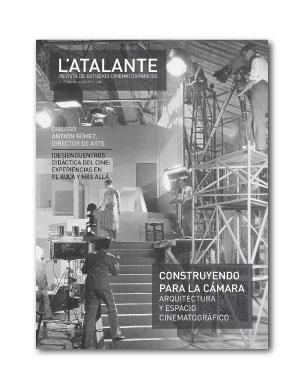Published 2014-01-01
Keywords
- Architecture,
- entrapment,
- design,
- interiors,
- sets
- pantheism,
- transcendentalism. ...More
How to Cite
Abstract
The Tree Of Life (Terrence Malick, 2011) generated a number of criticisms that focused on two main aspects of the film: the content and the form, especially the editing. Among the different multiple layers of reading that the film offers a deeper analysis is its use of spaces, of architecture. This can apparently go unnoticed, but it is in fact a key element in the construction of the characters. In other words, with such a fragmented structure, the production design and sets becoming significant and necessary for the identification of the characters; the cinematographic architecture helps the spectator, at a glance, to construct the personality of each one. Beginning with this film, this article attempts to sketch an outline of the use of architecture in the work of Terrence Malick and to reveal that his films go beyond pantheism.
Downloads
References
DELORME, Stéphane (2011a). En torno al gesto. Cahiers du cinema - España, nº48, 13-14.
DELORME, Stéphane (2011b). Jack Fisk, directeur artistique. Cahiers du cinema, nº668, 25.
FORNASIERO, Andrea (2007). Terrence Malick. Cinema tra classicità e modernità. Recco (Genova): Le Mani.
LA POLLA, Franco (2007). En A. FORNASIERO, Terrence Malick. Cinema tra classicità e modernità (p. 136). Recco (Genova): Le Mani.
LEIBNIZ, Peter (2012). Monadología. Madrid: Biblioteca Nueva.
QUINTANA, Ángel (2011). Del transcendentalismo al mesianismo neocon. Cahiers du cinema - España, nº48, 9-11.
REVIRIEGO, Carlos (2011). One Big Soul. Cahiers du cinema - España, nº48, 9-11.
TANIZAKI, Junichiro (2010). El elogio de la sombra. Madrid: Siruela.
ZUMTHOR, Peter (2006). Atmósferas. Barcelona: Gustavo Gili.
ZUMTHOR, Peter (2010). Pensar la arquitectura. Barcelona: Gustavo Gili.

